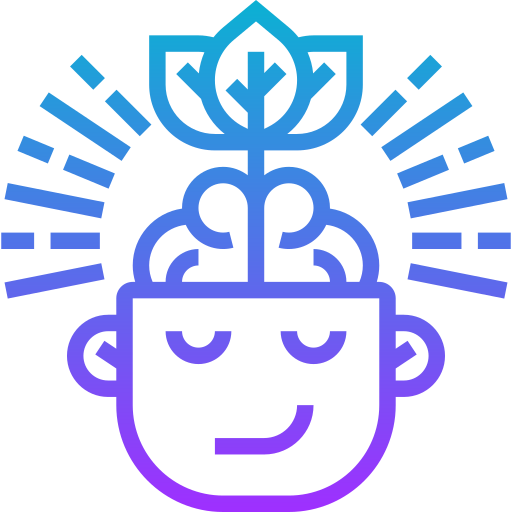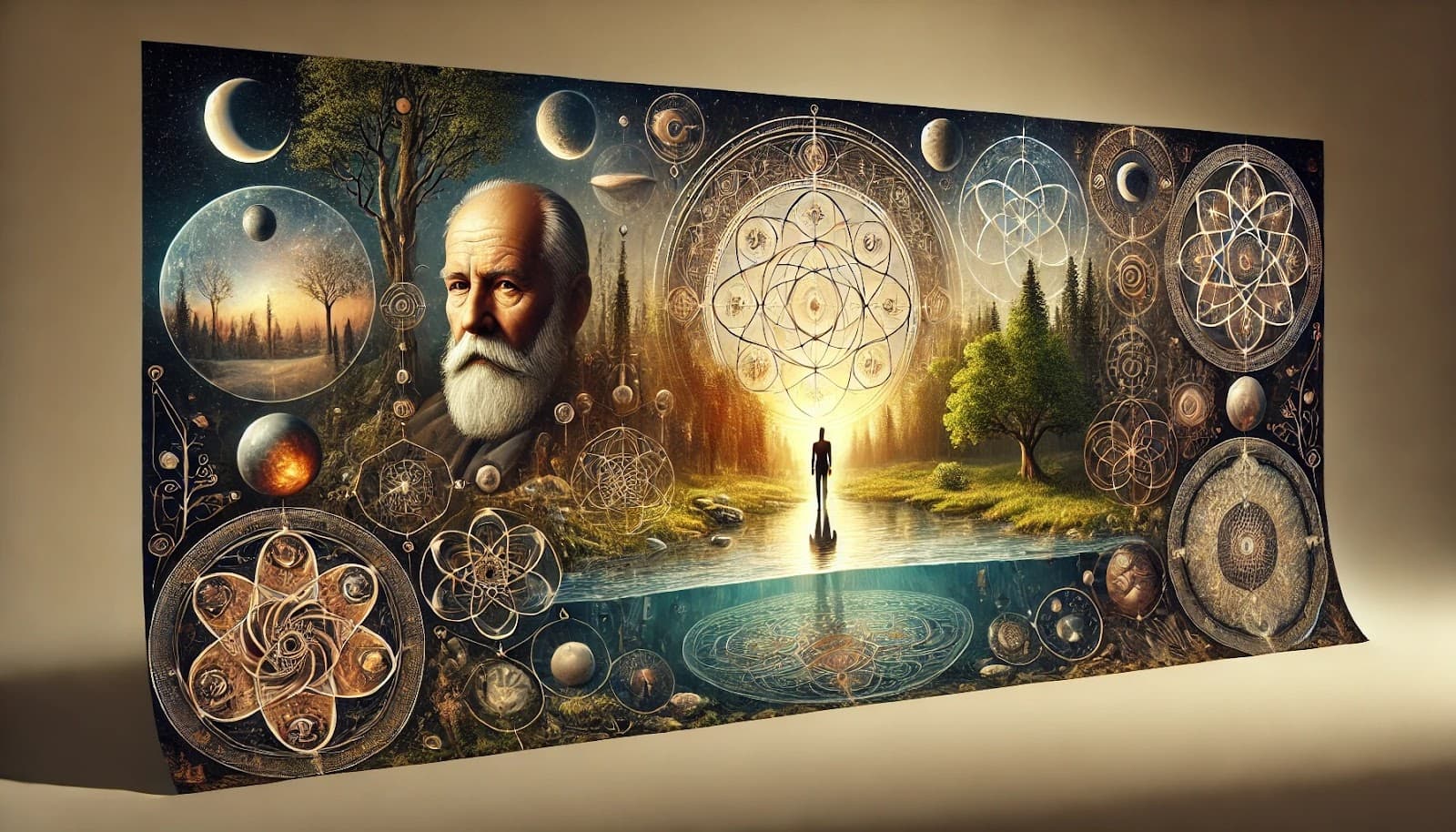Carl Jung, a Swiss psychiatrist and psychoanalyst, is widely regarded as one of the most influential figures in the development of modern psychology. His work, which focuses on the depths of the human psyche, introduced groundbreaking concepts such as the collective unconscious, archetypes, and the process of individuation. Unlike his contemporaries, Jung ventured beyond the conventional boundaries of psychoanalysis, exploring spiritual, mythological, and cultural dimensions of the human experience. His belief in the transformative power of integrating unconscious elements into conscious awareness laid the foundation for much of what would later be explored in transpersonal psychology, a field that integrates psychological and spiritual dimensions into a comprehensive approach to human well-being.
Transpersonal psychology emerged in the late 20th century as a response to the limitations of traditional psychological frameworks, emphasizing the importance of higher states of consciousness, self-actualization, and the exploration of spiritual experiences. Jung’s influence on this field is undeniable, as his concepts of the collective unconscious and archetypes provide a framework for understanding the deeper, often spiritual, layers of the human experience. His ideas on individuation and the integration of the shadow self align closely with transpersonal psychology’s focus on personal growth, self-transcendence, and the pursuit of a more holistic understanding of the self. This article explores how Jung’s psychological theories continue to shape the principles and practices of transpersonal psychology, offering insights into the interconnectedness of mind, spirit, and consciousness.
Who is it Carl Jung
Carl Jung (1875–1961) was a Swiss psychiatrist and psychoanalyst who founded analytical psychology. He is considered one of the most important figures in the history of psychology and is best known for his work on the unconscious mind, personality theory, and the development of psychological concepts such as the collective unconscious, archetypes, and individuation.
Jung began his career as a medical doctor working with patients suffering from mental illnesses, and he initially worked alongside Sigmund Freud. Though Jung was influenced by Freud’s ideas, particularly on the unconscious, he eventually diverged from Freud’s theories. Jung’s theories placed greater emphasis on the collective unconscious, a concept which suggests that all humans share a set of inherited memories and archetypes—universal symbols and patterns that shape our experiences and behaviors. This was in contrast to Freud’s focus on personal, repressed experiences shaping the unconscious.
Carl Jung’s Key Concepts
Carl Jung’s theories in analytical psychology introduced foundational ideas that continue to influence modern psychology, particularly through his concepts of the collective unconscious, archetypes, and individuation. These concepts explore the deep inner workings of the human psyche, offering a framework for understanding personality, behavior, and spiritual growth.
Jung proposed that beneath the personal unconscious lies a collective unconscious—a universal layer of the unconscious shared by all humans. It contains archetypes, which are inherited, symbolic images and patterns that appear across cultures and time.
Key Archetypes Include:
- The Self: Represents unity and the totality of the psyche.
- The Persona: The social mask one wears in public.
- The Shadow: The dark, repressed aspects of personality.
- The Anima/Animus: The inner feminine side of a man / masculine side of a woman.
- The Hero: Embodies courage and the quest for transformation.
- The Wise Old Man: Symbolizes wisdom and guidance.
- The Great Mother: Represents nurturing and destructive forces.
These archetypes emerge in dreams, myths, religion, and art, guiding inner development and symbolizing the shared human experience.
Individuation is the process of integrating all aspects of the psyche—including conscious and unconscious parts—to become a whole, authentic self.
Key Elements of Individuation:
- Ego Awareness: Developing a strong sense of self without over-identifying with the ego.
- Shadow Integration: Confronting and accepting repressed qualities to reduce inner conflict.
- Balancing Opposites: Harmonizing dualities like reason and emotion, masculine and feminine.
- Spiritual Growth: Achieving deeper self-understanding and connection to the Self archetype.
- Symbolic Exploration: Interpreting dreams, symbols, and myths as tools for insight.
Jung saw individuation not just as therapy, but as a spiritual journey toward authenticity and fulfillment.
How Carl Jung’s Influence on Transpersonal Psychology
Carl Jung’s influence on transpersonal psychology is profound and far-reaching, as his ideas provided key conceptual frameworks that merged psychology and spirituality. Transpersonal psychology, which emerged in the mid-20th century, emphasizes the integration of higher states of consciousness, spiritual experiences, and self-actualization into psychological theory. Jung’s work laid the foundation for this approach by exploring the depth of the unconscious and the potential for spiritual growth through the integration of the psyche.
The Role of the Unconscious in Spirituality
One of the central themes in transpersonal psychology is the exploration of the unconscious mind, and Jung’s theory of the collective unconscious provided a perfect framework for understanding the spiritual dimensions of human consciousness. Jung’s belief that the unconscious is not just a repository of repressed memories but also a source of universal symbols, myths, and archetypes aligned well with transpersonal psychology’s interest in transcending the ego and connecting to a deeper, collective consciousness. In this regard, Jungian ideas helped transpersonal psychology move beyond the individualistic focus of traditional psychoanalysis to include spiritual dimensions and shared psychological experiences across humanity.
Archetypes and Spiritual Symbols
Jung’s concept of archetypes, the universal symbols and patterns residing in the collective unconscious, has been crucial for the development of transpersonal psychology. Archetypes such as the Hero, the Wise Old Man, or the Anima and Animus appear across different cultures and spiritual traditions. These archetypes not only shape our psychological development but also play a role in spiritual awakening and transformation. Transpersonal psychologists integrated these ideas into their understanding of the soul’s journey toward enlightenment, seeing archetypes as gateways to spiritual wisdom and as tools for understanding the deeper meanings of life experiences. The use of archetypal images in therapy and spiritual practices became a key technique in transpersonal psychology.
Individuation and Self-Realization
Jung’s concept of individuation, the process by which an individual integrates unconscious aspects of the self into their conscious awareness to achieve psychological wholeness, has a direct parallel in transpersonal psychology’s focus on self-realization. For Jung, individuation is not just about personal growth; it’s also about aligning with a higher, spiritual self. Transpersonal psychology builds on this by focusing on the spiritual dimensions of self-actualization and transcendence. The individuation process, according to Jung, is the path toward integrating one’s ego with the broader, spiritual aspects of the Self, which is the central goal of transpersonal psychology: to move beyond ego boundaries and access higher states of consciousness and self-awareness.
Integration of the Shadow and Spiritual Transformation
Another key area where Jung’s ideas influenced transpersonal psychology is in the integration of the Shadow, the unconscious part of the personality that contains repressed traits, fears, and desires. Jung believed that confronting and integrating the Shadow is a necessary step toward personal and spiritual growth. Transpersonal psychology, which emphasizes inner healing and spiritual transformation, adopted this idea, seeing the integration of the Shadow as essential to transcending the ego and achieving higher spiritual states. By acknowledging and embracing the Shadow, individuals can overcome limiting beliefs and achieve greater wholeness, a concept central to both Jungian psychology and transpersonal theory.
Spiritual and Mystical Experiences
Jung’s interest in spirituality, mysticism, and the numinous (the experience of the divine or transcendent) played a significant role in shaping transpersonal psychology’s focus on altered states of consciousness and spiritual experiences. Jung himself was fascinated by mystical and religious experiences and believed that they could be deeply transformative for the individual. His understanding of the numinous experience—as a profound, spiritual encounter with something beyond the self—resonates with transpersonal psychology’s interest in expanded states of awareness and transcendent experiences. These experiences, according to both Jung and transpersonal psychologists, offer individuals a path to deeper self-understanding and spiritual awakening.
Conclusion
Carl Jung’s influence on transpersonal psychology is both profound and enduring. His exploration of the unconscious, particularly the collective unconscious, and his development of key concepts such as archetypes, the Shadow, and individuation, provided a rich framework for understanding the deeper dimensions of human consciousness. Transpersonal psychology, with its focus on spiritual growth, self-transcendence, and the integration of higher states of consciousness, found in Jung’s ideas a powerful tool for understanding the connection between the psychological and the spiritual.

